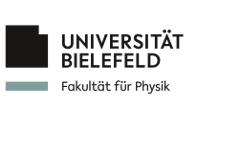
Cosmology from radio sky surveys
The Bielefeld cosmology group joined the International Low Frequency Array (LOFAR) Telescope in 2010. We are interested in various aspects of observational cosmology with radio surveys. The International LOFAR Telescope (ILT) is an advanced radio interferometer (consisting of 50 stations distributed across Europe). LOFAR is the most important Square Kilometre Array (SKA) pathfinder telescope in Europe.
Each LOFAR station consists of High (110-240 MHz) and Low (105-80 MHz) Band Antennas (HBA and LBA). These frequencies are low compared to other radio telescopes like the Jansky Very Large Array (JVLA) in New Mexico, the Karoo Array Telescope (MeerKAT) in South Africa or the Australian Square Kilometre Array Pathfinder (ASKAP) in Australia. LOFAR has a huge field of view, which is ideal for detecting transients and for creating large area surveys.
As part of the commissioning process the Multifrequency Snapshot Sky Survey (MSSS) has been conducted. For MSSS the whole Northern sky will be measured with HBA and LBA antennas.
The German Long Wavelength consortium (GLOW) coordinates the German contribution to the ILT.
Sternwarte Hamburg and Bielefeld University operate the LOFAR station DE609 in Norderstedt near Hamburg.
The Bielefeld cosmology group is participating in the LOFAR Key Science Project Surveys / Cosmology. We work on:
1. Quality control of LOFAR catalogues used for cosmology.
2. Cosmic radio dipole.
3. Autocorrelation function.
4. Theoretical predictions.
On 13th - 17th February 2012 we organized GLOW Interferometry School.
Opening of the new International LOFAR station in Hamburg, Sept 9, 2015